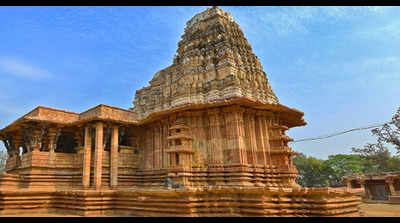- News
- City News
- Hyderabad News
- Ramappa temple’s first renovation effort was taken up in 1914
Trending
This story is from July 26, 2021
Ramappa temple’s first renovation effort was taken up in 1914
It was the Hyderabad state archaeology department, under the supervision of eminent archaeologist-conservationist Ghulam Yazdani, that first took up renovation of the historic Ramappa temple in 1914.

Ramappa temple
Yazdani, who conserved the Ajanta and Ellora cave paintings for posterity, renovated the dilapidated Ramappa temple and it is his conservation efforts that have now fetched the world heritage tag to the Kakatiyan temple of the 13th century.

Yazdani was one of the founders of the archaeology department in the erstwhile Nizam state. The International Council on Monuments and Sites (ICOMOS) in its report to the online extended 44th session of the World Heritage Committee of UNESCO, which is currently on at Fuzhou in China, specifically makes a reference to the conservation of the temple complex by the Nizam government to state that the condition of the temple is now in a satisfactory state.
“The main temple of the complex, the Rudreshwara (Ramappa) Temple, is considered to be in a satisfactory state of conservation and has been frequently conserved and maintained since 1914 by the ASI (Hyderabad archaeology department of the Nizam) and with the guidance of the Kakatiya Heritage Trust. Prior to these conservation initiatives the temple was overgrown with vegetation and damaged by growing roots, which were removed,” it said.
The temple never collapsed even though local differential settlement caused misalignments to some elements.
During the first large conservation campaign in 1931 by the Nizam government, decorations and ornaments that had fallen off but were traceable were reattached in their original positions.
“ICOMOS considers that the contemporary state of conservation is a product of continuous conservation activities since the early 20th century, during which all elements of the temple complex, apart from the Kameshwara Temple, have been conserved to different degrees,” the report said.
End of Article
FOLLOW US ON SOCIAL MEDIA










